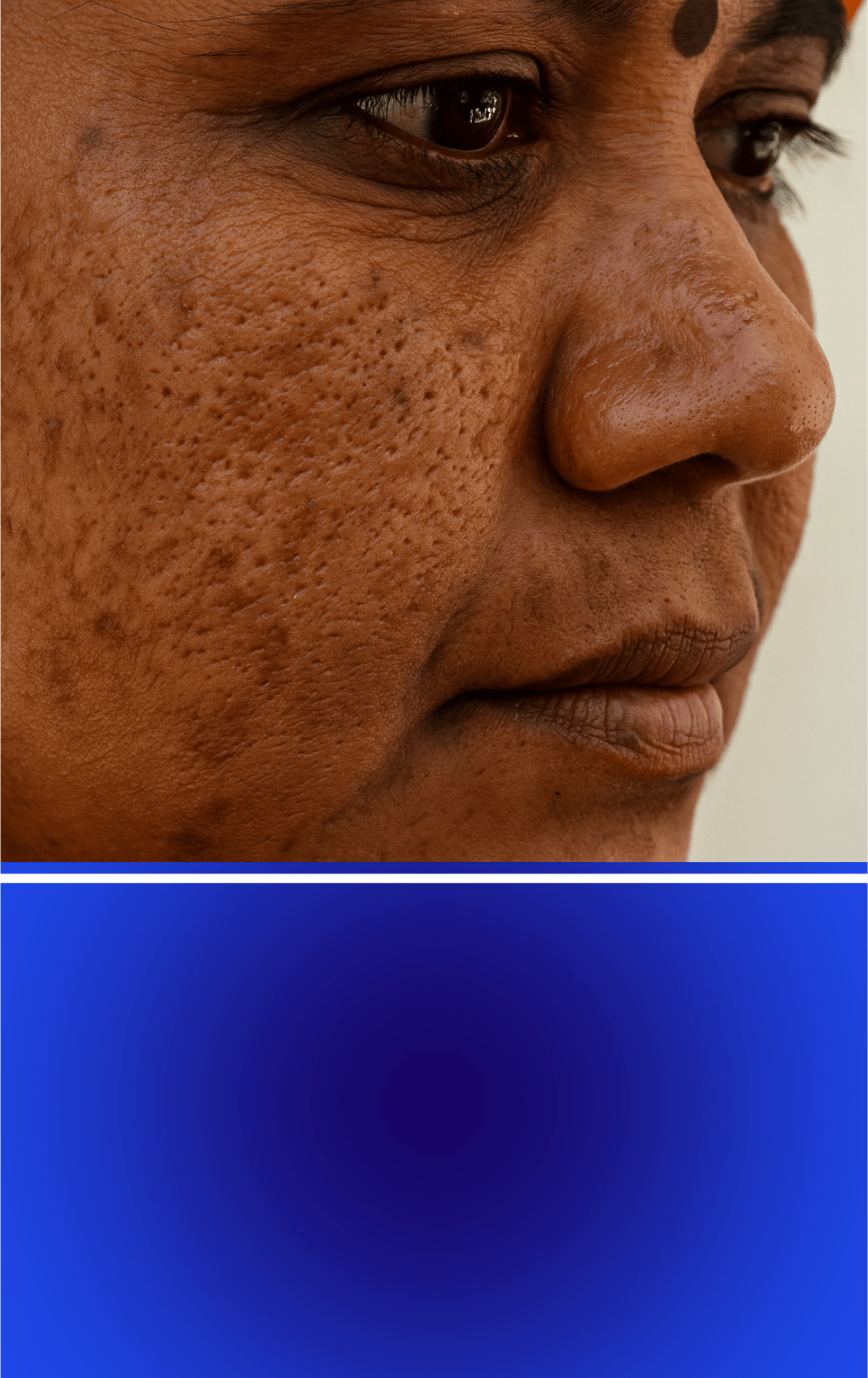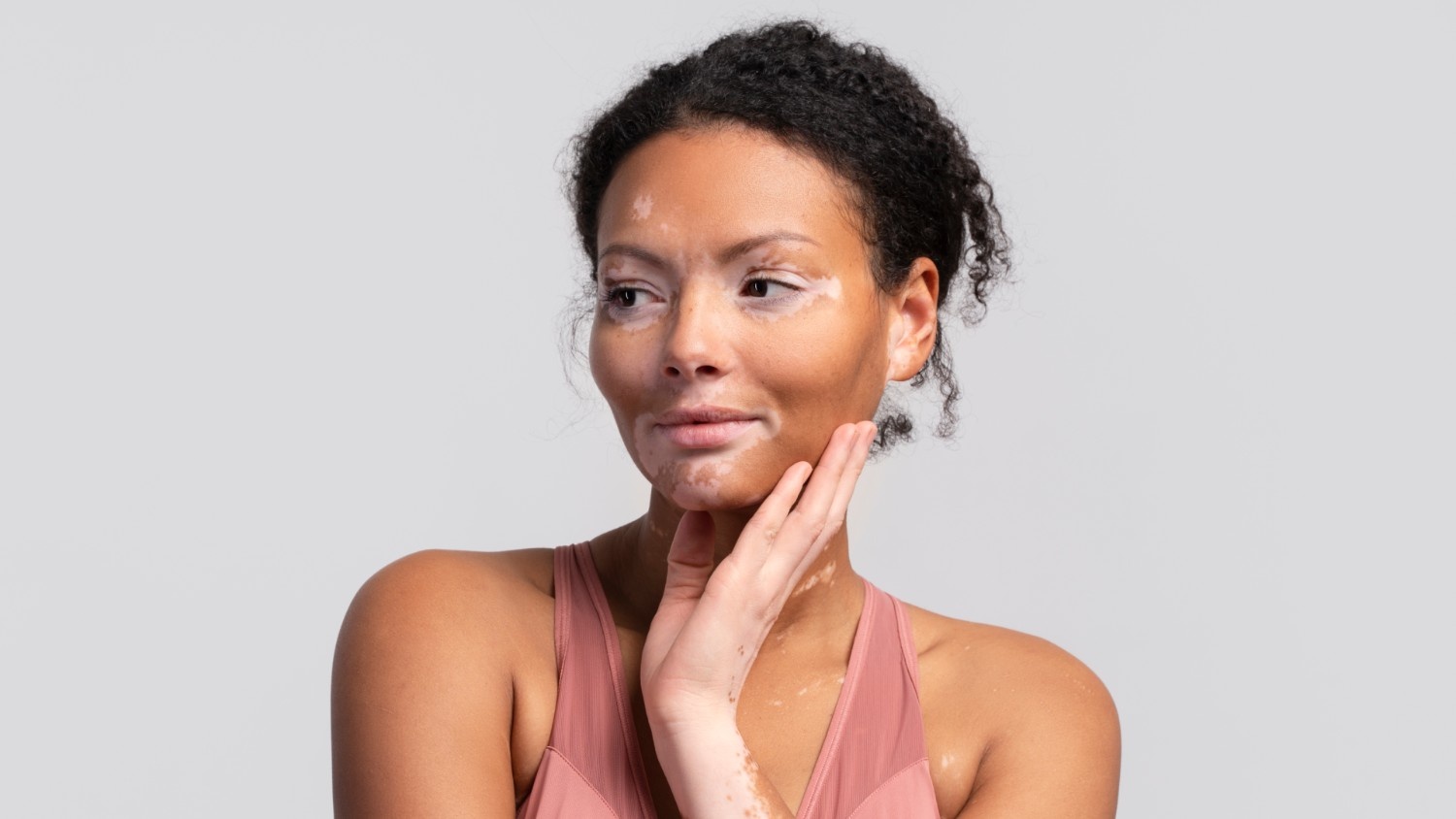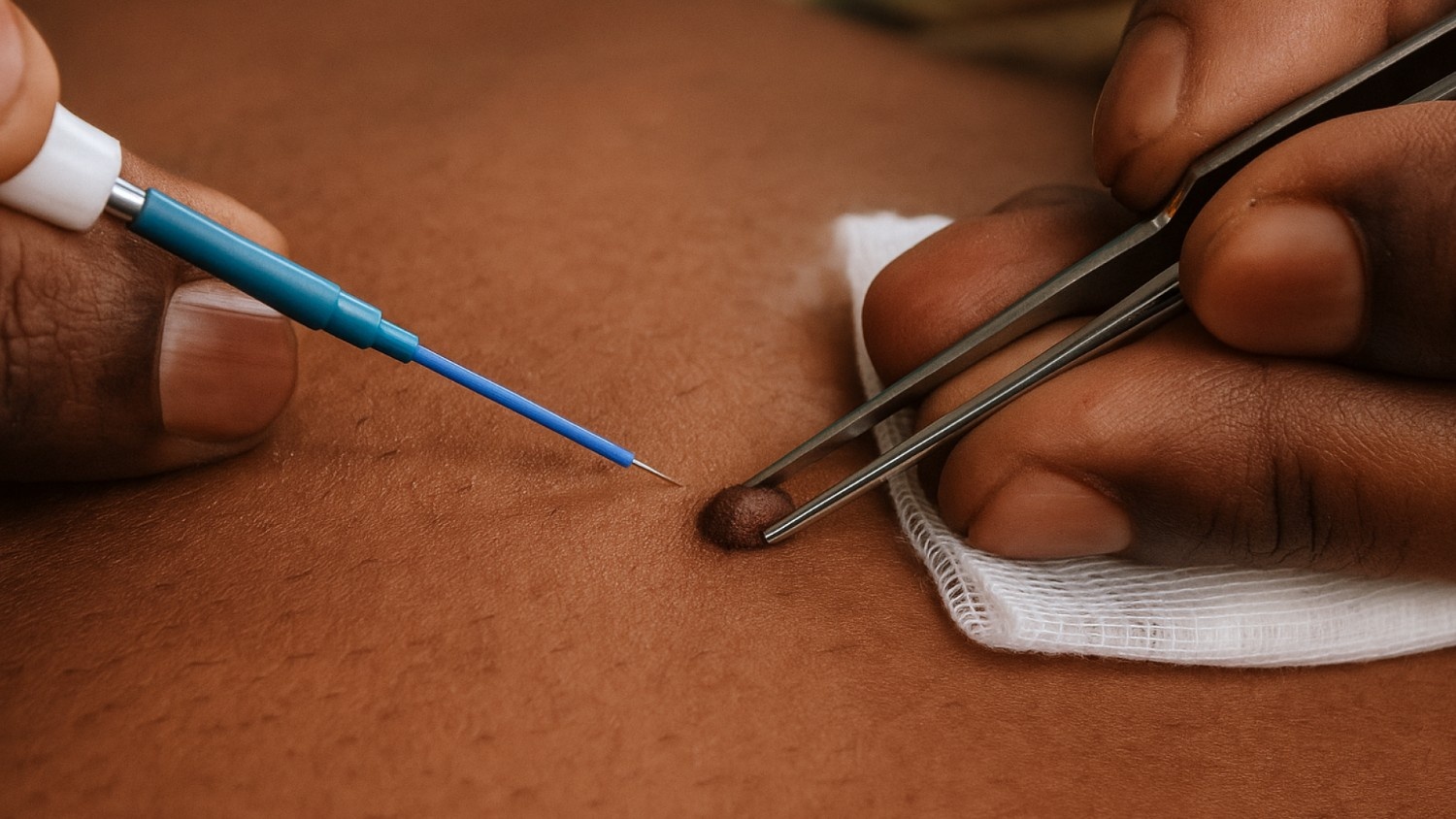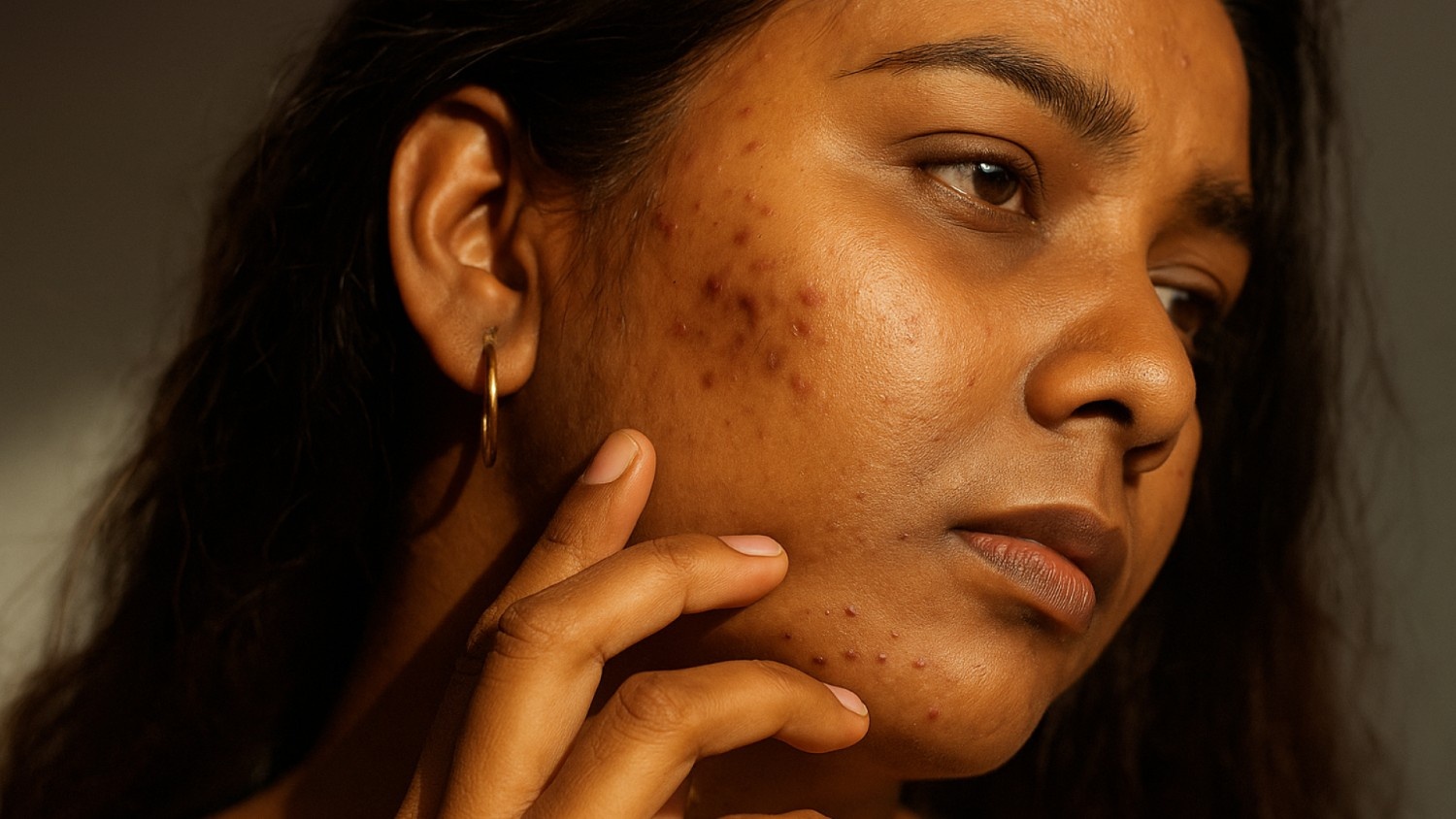Spotting tiny, dark spots on the legs that often resemble a strawberry can be a frustrating sight. This widely-experienced condition, commonly referred to as 'strawberry skin,' can lead to feelings of self-consciousness, as the skin's texture often appears uneven and discoloured.
The reality is that this is not a simple surface issue but a visual symptom of underlying skin concerns that require a precise, clinical approach. Instead of relying on generic routines or temporary solutions, a more informed understanding of the science behind this condition is essential.
This guide will explore what strawberry skin is, from its precise causes to the structured treatment methods that address its visible signs and restore skin health.
Overview
- Understanding the Cause is Key: Strawberry skin isn't a single condition but a symptom of underlying issues like clogged pores, KP, and improper hair removal. Identifying the specific cause is the first step toward finding an effective solution.
- At-Home Care is Foundational: A consistent routine of gentle exfoliation, proper moisturization, and mindful hair removal can significantly improve the condition and prevent recurrence.
- Professional Treatments Offer a Definitive Solution: For stubborn cases, procedures like laser hair reduction, chemical peels, and microdermabrasion can provide a long-term resolution by addressing the issue at its source.
- Know When to Seek Expert Help: If your condition worsens, causes discomfort, or doesn't improve with at-home care, a dermatologist can provide an accurate diagnosis and a tailored treatment plan.
What Is Strawberry Skin?
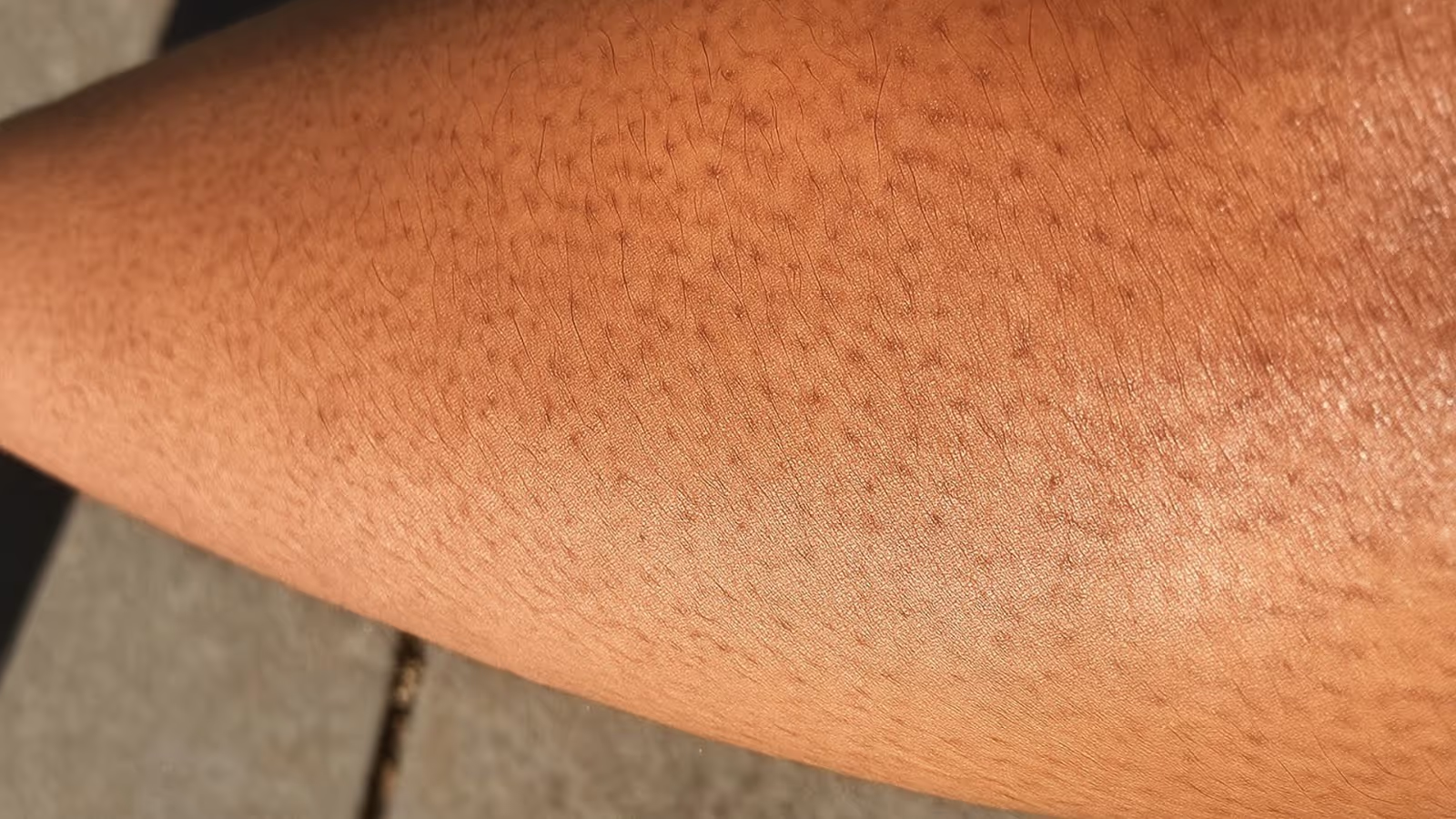
Strawberry skin, or more commonly strawberry legs, is a descriptive term for the appearance of dark, dotted pores on the skin. This aesthetic resembles the surface of a strawberry, hence the name.
From a clinical perspective, this visual effect is not a dermatological condition itself but rather a sign of clogged or enlarged hair follicles. The distinct dark spots are essentially hair follicles and their associated pores that have become filled with a mix of dead skin cells, oil, and bacteria. When the contents of these pores are exposed to the air, they oxidise and turn a dark colour, creating the characteristic dotted appearance on the skin.
The most common areas affected by this condition include:
- The legs (specifically the shins and calves)
- The thighs
- The arms
Though often harmless and causing minimal discomfort, it is a sign that your skin's health could benefit from a proper care routine and a targeted approach. This journey begins with understanding its root causes.
What Causes Strawberry Skin?

While the appearance of strawberry skin is a singular concern, it can be a symptom of various underlying issues. Here is a breakdown of the primary factors that contribute to this condition:
- Clogged Pores: The most direct cause is the clogging of your hair follicles. Pores can become blocked with a combination of oil, dead skin cells, and bacteria. When this debris is exposed to the air, it oxidises and darkens, leading to the distinct dotted appearance that defines strawberry skin.
- Improper Shaving Technique: Shaving is a major contributor to this condition. Using a dull razor, shaving without a proper lubricant, or shaving against the direction of hair growth can irritate hair follicles. This irritation can not only lead to inflammation but also make the pores more susceptible to clogging and darkening.
- Folliculitis: Folliculitis is a medical condition defined as the inflammation of the hair follicles, which is caused by a bacterial or fungal infection. When the follicles become inflamed, they can swell into small red bumps that resemble the dots of strawberry skin, and can sometimes be painful or itchy.
- Keratosis Pilaris (KP): Keratosis Pilaris is a common, genetic skin condition where the body produces excess keratin, a natural skin protein. This keratin forms plugs that block the hair follicles, resulting in tiny, rough bumps that can feel like sandpaper. These bumps can darken, creating a 'strawberry skin' appearance, especially on the thighs and upper arms.
- Ingrown Hairs: Ingrown hairs occur when hair, instead of growing outward, curls back and grows into the skin. This triggers an inflammatory reaction, causing a small, often red or dark bump to form over the trapped hair. A high number of these bumps in one area can contribute to the appearance of strawberry skin.
- Overly Dry Skin: Dry skin lacks the moisture needed to maintain a healthy barrier function. This can make the skin more susceptible to irritation, inflammation, and a build-up of dead skin cells on the surface. These excess cells can then easily clog the hair follicles, aggravating the dotted appearance.
- Acne: While typically associated with the face and back, acne can also develop on the legs and thighs. Body acne is caused by the same processes as facial acne: clogged hair follicles, bacteria, and inflammation. The resulting blackheads, whiteheads, or small pustules can contribute to the discoloured, dotted texture of strawberry skin.
These varied factors all contribute to the distinct visual signs of strawberry skin. But managing these causes on your own can be challenging. For a precise diagnosis and a personalised treatment plan, schedule a consultation with our MD dermatologist at Velantis today.
Symptoms of Strawberry Skin
This condition is generally a cosmetic concern and is not usually itchy or painful. If you suspect you have strawberry skin, look for the following distinct signs:
- Small, dark spots or dots on the skin, resembling a strawberry's surface.
- A dotted or pitted texture, especially noticeable after shaving.
- The presence of tiny red bumps or inflammation around the hair follicles.
- A rough or "sandpaper-like" texture to the skin.
With a clear understanding of its symptoms, you can now explore the most effective treatment methods.
How to Treat Strawberry Legs at Home?
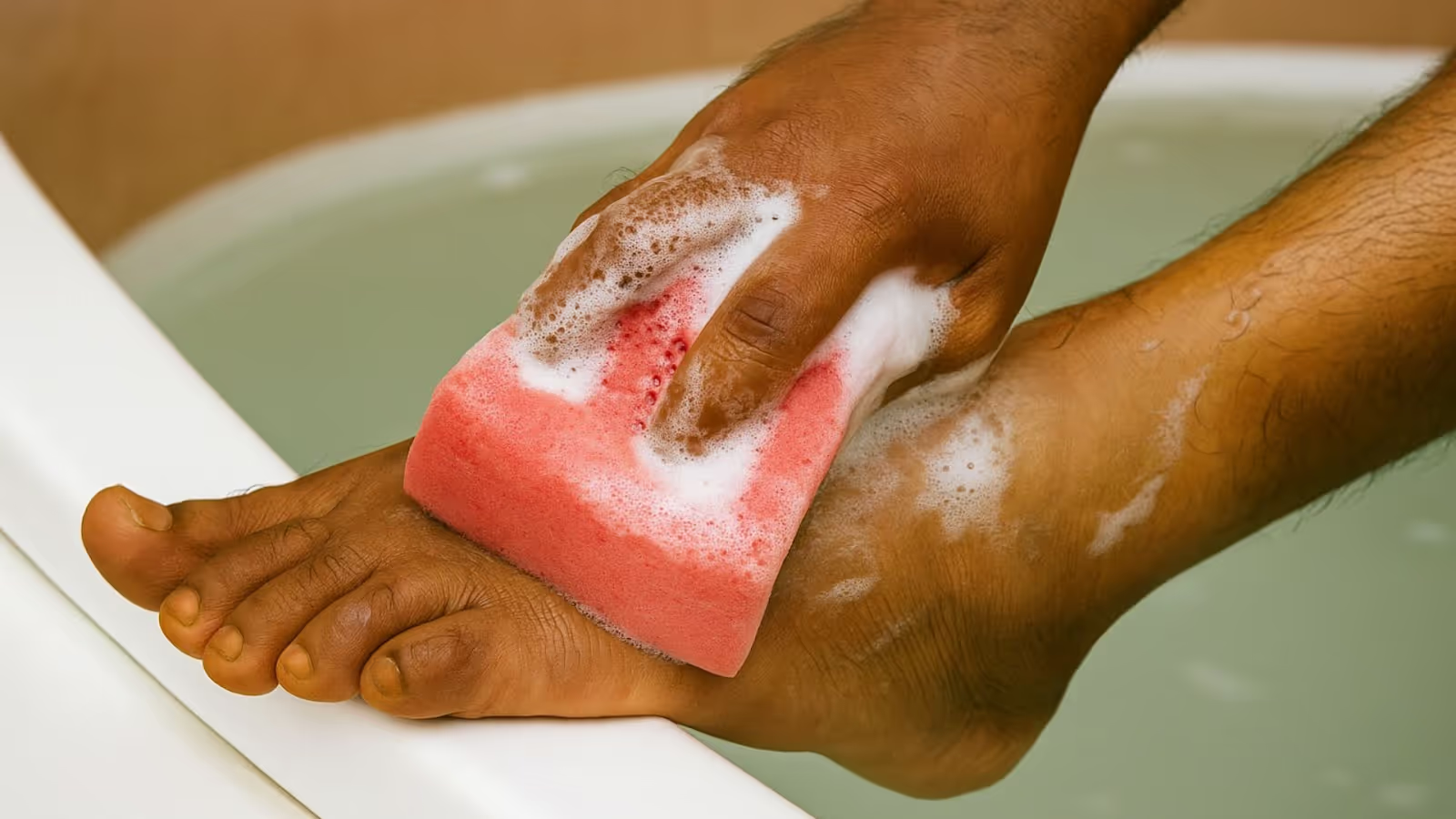
Preventing and treating strawberry skin at home requires a proactive approach to your daily skincare and hair removal routine. By adopting these practical habits, you can significantly reduce your risk of developing the condition and maintain clearer, smoother skin.
- Exfoliation: Regular exfoliation is key to unclogging pores. Opt for a gentle exfoliating body wash or scrub containing chemical exfoliants like Glycolic Acid (an AHA) to dissolve dead skin cells, or Salicylic Acid (a BHA) to penetrate and clear out follicles.
- Moisturisation: Keep your skin consistently hydrated. Dry skin is more susceptible to the conditions that lead to strawberry skin. Apply a non-comedogenic moisturiser immediately after showering to lock in moisture, keep the skin supple, and prevent a build-up of dead skin cells.
- Practise Proper Hair Removal: Use a fresh, sharp razor every few shaves and always apply a shaving gel or cream to reduce irritation. Consider alternative hair removal methods such as an epilator or waxing, as they remove hair from the root and can reduce the likelihood of ingrown hairs and razor-induced irritation.
- Avoid Hot Showers and Baths: Prolonged exposure to hot water can strip the skin of its natural oils, leading to excessive dryness and irritation. Instead, opt for lukewarm water to protect your skin's moisture barrier.
- Wear Breathable Fabrics: After exercise or in humid climates, wear loose-fitting, breathable clothing made from natural fibres. This helps prevent friction and sweat buildup, which can irritate hair follicles and promote bacterial growth.
- Pat Skin Dry: After showering, avoid aggressively rubbing your skin with a towel. Instead, gently pat the skin dry to retain moisture and prevent friction that can irritate hair follicles.
While a consistent at-home routine is vital, some cases require expert intervention to fully resolve.
Clinical and Professional Treatments for Strawberry Legs

If at-home care isn't providing the results you want, it's time to consider a professional approach. These clinical treatments, guided by a dermatologist, offer a powerful way to address the root causes of strawberry skin and achieve a lasting effect, working hand-in-hand with your daily routine.
Topical and Medical Treatments
These treatments involve the application of powerful solutions or prescription medications to address the underlying cause of the condition.
- Chemical Peels: In-clinic chemical peels involve applying a professionally formulated solution to the skin to cause a controlled exfoliation. This procedure removes dead skin cells and superficial pigmentation, resulting in a clearer, more even skin texture.
- Medical Management: In cases where an infection is the primary cause (such as Folliculitis), a dermatologist may prescribe topical or oral antibiotics or antifungal treatments. This targeted medical care is crucial for resolving persistent or severe cases.
Non-Invasive Procedures
These in-office treatments use advanced technology to safely and effectively target the source of the problem without requiring surgery or significant downtime.
- Laser Hair Reduction: This is one of the most effective and lasting treatments for strawberry skin caused by shaving, ingrown hairs, or folliculitis. By targeting and destroying the hair follicles with concentrated light energy, laser therapy eliminates the root cause of irritation and clogged pores. It significantly reduces the appearance of the dark spots over the course of a few sessions.
- Microdermabrasion: This non-invasive procedure uses a fine abrasive tip to gently exfoliate the skin's outer layer. It effectively buffs away dead skin cells and superficial buildup, revealing healthier skin underneath and reducing the dotted appearance of the pores.
- Electrolysis: As an alternative to laser hair reduction, electrolysis uses an electrical current to permanently destroy the hair follicles, thereby addressing the issue of ingrown hairs and associated symptoms at their source.
At Velantis Dermatology, we utilise advanced technology and expert care for skin rejuvenation, hair removal, and targeted treatments to provide patients with clear and lasting results.
Intensive Treatments
These are more aggressive procedures reserved for cases where the condition is severe or has resulted in significant scarring.
- Dermabrasion: This procedure uses a high-speed rotating instrument to "sand" the outermost layers of the skin, promoting the growth of a new, smoother layer. It is a form of deep skin resurfacing.
With so many options available, it can be difficult to know which treatment is best for your specific case. This is where the guidance of an expert becomes invaluable.
When to Consult a Dermatologist for Strawberry Skin?
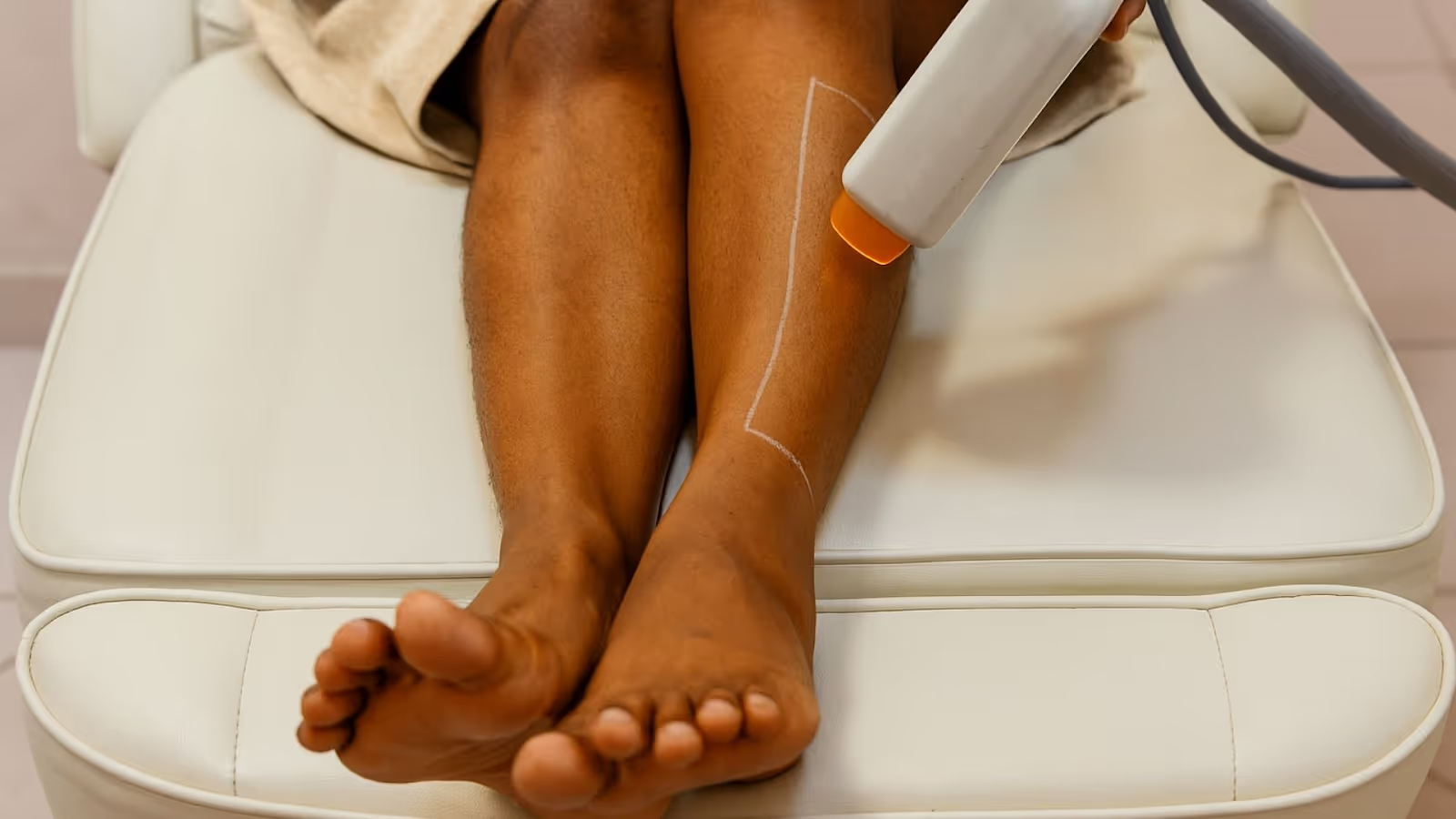
While many cases of strawberry skin can be managed with proper home care, there are specific instances when a professional consultation is essential for effective treatment. Seeking expert advice can prevent the condition from worsening and ensure you receive the correct diagnosis.
Consult a dermatologist if you face any of the following difficulties:
- Your condition does not improve: If you have consistently followed at-home prevention and care strategies for several weeks without seeing any significant improvement, a deeper clinical evaluation is needed to identify the underlying cause.
- Symptoms worsen or spread: If the dark spots become more prominent, spread to other areas, or are accompanied by increased redness or inflammation, this may indicate an underlying medical condition that requires professional intervention.
- You experience pain or discomfort: Strawberry skin is typically a cosmetic concern, but if the spots become painful, itchy, swollen, or show signs of infection like pus, it's crucial to seek medical attention to rule out conditions like Folliculitis.
- You are unsure of the cause: A dermatologist can accurately diagnose whether your condition is due to simple clogged pores, Keratosis Pilaris, or another underlying issue, and create a tailored treatment plan that addresses your specific needs.
Ultimately, a dermatologist offers the expertise to accurately diagnose the root cause of your concerns and design a treatment plan that is both safe and effective.
Conclusion
Strawberry skin is a common concern, but it is not a problem you have to live with. By understanding its precise causes, from improper hair removal to underlying conditions like Keratosis Pilaris, you can take control of your skin's health. The journey to clearer, more even skin is built on consistent, evidence-based practices, not quick fixes.
At Velantis Dermatology, our philosophy is to provide ethical, patient-first care that prioritises your long-term well-being. We believe that every individual deserves a clear and accurate diagnosis, followed by a treatment plan that is both effective and tailored to their specific needs. Our focus is always on clinical outcomes and education, empowering you to make informed decisions about your skin.
If you are ready to move past the frustration of strawberry skin and begin a science-backed treatment journey, we are here to help. Contact Velantis Dermatology today to schedule a consultation with our trusted MD dermatologist, Dr. Janani Sree C M, and take the first step toward lasting skin health.
FAQs
1. Is strawberry skin the same as keratosis pilaris (KP)?
No, they are not the same, though they can look similar. Strawberry skin is a descriptive term for dark, dotted pores caused by various factors, including KP. Keratosis pilaris is a specific, genetic condition that causes tiny, rough bumps due to excess keratin plugging the hair follicles.
2. Is strawberry skin a serious medical condition?
No, in most cases, strawberry skin is not a serious medical concern. It is primarily an aesthetic issue that causes minimal discomfort. However, if the condition is accompanied by pain, warmth, or pus, it could indicate an underlying infection like folliculitis, which requires medical attention.
3. What is the most effective treatment for strawberry skin?
The most effective treatment depends entirely on the root cause. For issues related to shaving and clogged pores, laser hair reduction is often considered the most definitive, long-term solution. For conditions like folliculitis or KP, a dermatologist might recommend a combination of medical-grade topicals and in-clinic procedures like chemical peels.
4. How long does it take for treatments to show results?
Results can vary widely depending on the chosen treatment and the severity of the condition. At-home routines may show subtle improvements in a few weeks. Professional treatments like laser hair reduction and chemical peels often require multiple sessions to achieve optimal results, with noticeable changes becoming apparent after the first few sessions.
5. Are professional treatments for strawberry skin painful?
Professional treatments are designed to minimise discomfort. Procedures like laser hair reduction may feel like a quick snap of a rubber band against the skin. In-clinic chemical peels can cause a tingling or warming sensation. Your dermatologist will take all necessary steps to ensure you are comfortable throughout the procedure.
6. What is the typical cost of professional treatments?
The cost of professional treatment for strawberry skin varies based on the specific procedure, the number of sessions required, and the size of the area being treated. A personalised consultation is the best way to get an accurate quote tailored to your specific needs.
7. Can strawberry skin be cured permanently?
While conditions like folliculitis and ingrown hairs can be permanently resolved with treatments like laser hair reduction, other causes like keratosis pilaris are genetic and may require ongoing management. However, with a proper and consistent routine, you can significantly reduce the appearance of strawberry skin and maintain a clear skin texture.
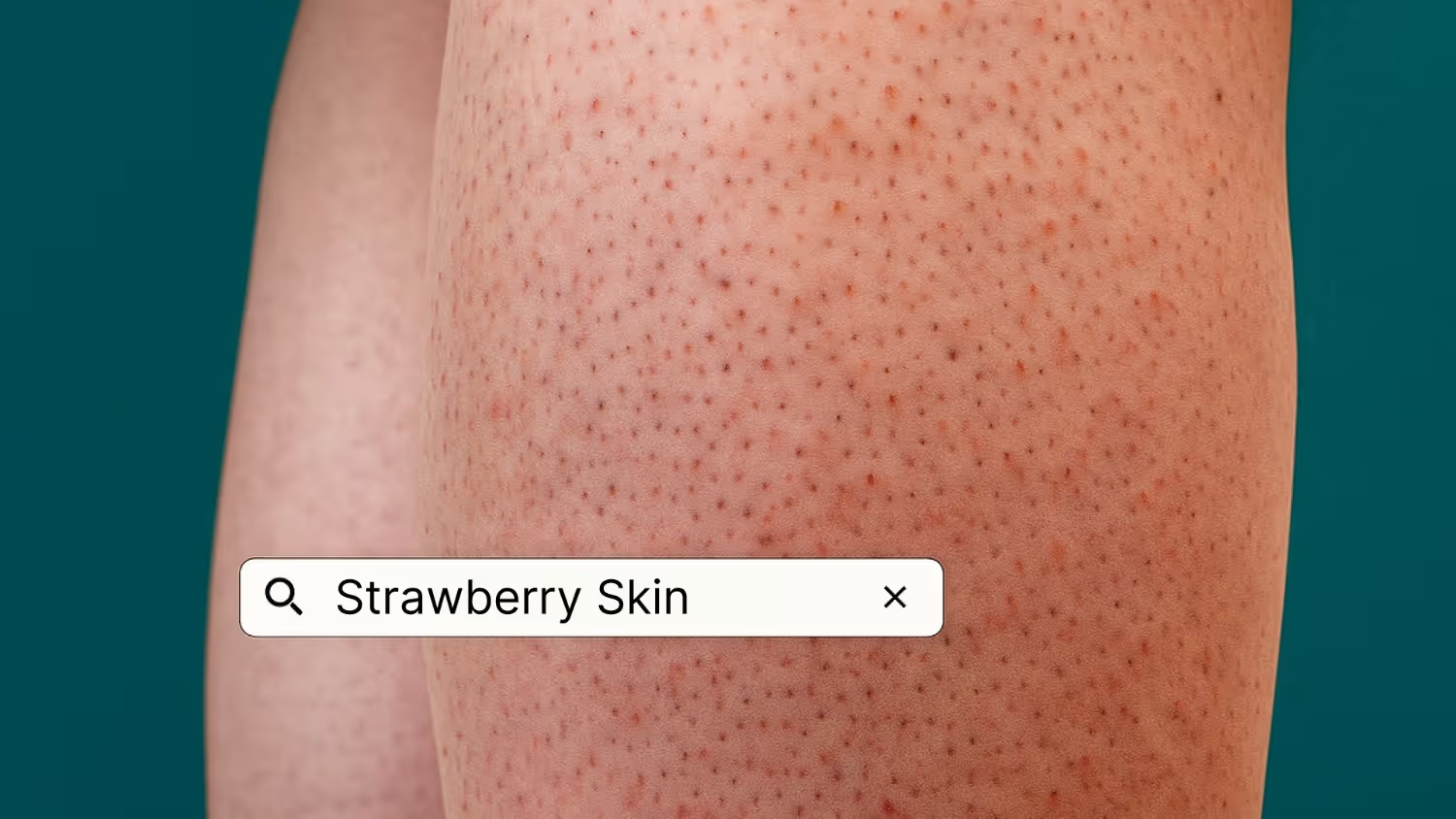

.png)
